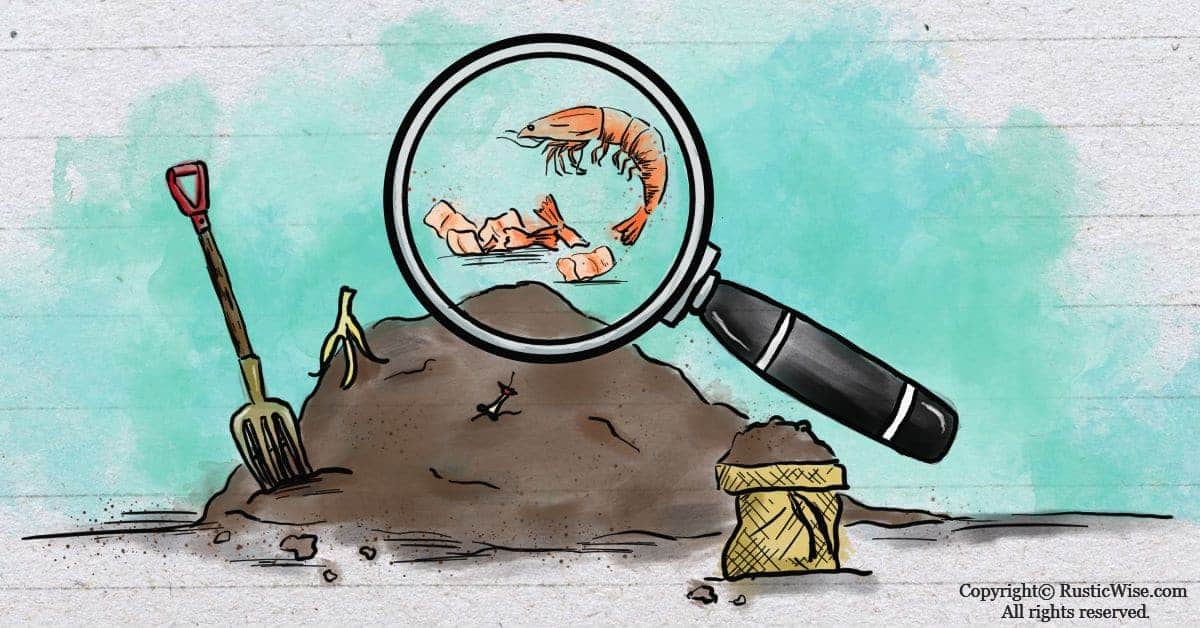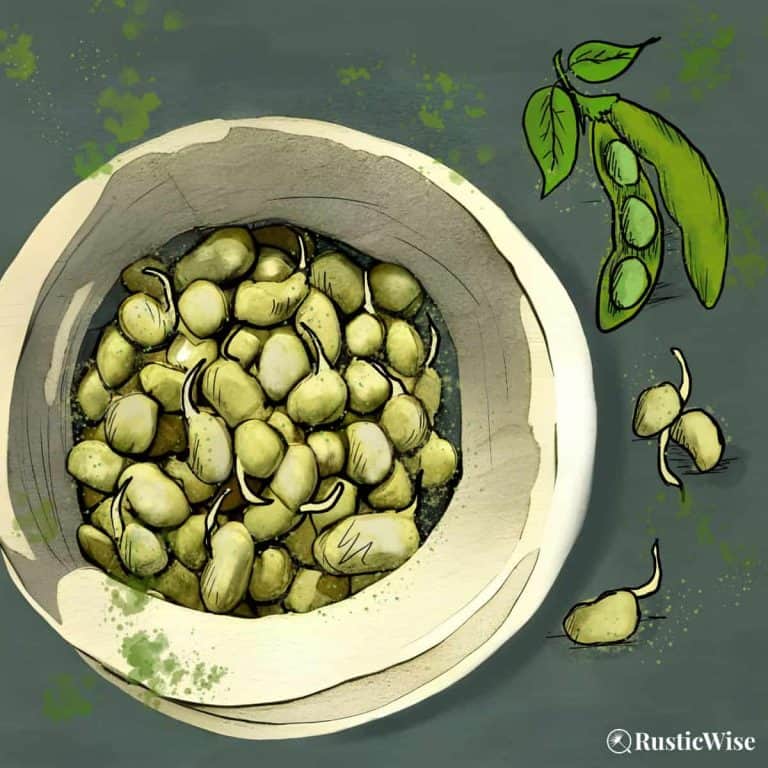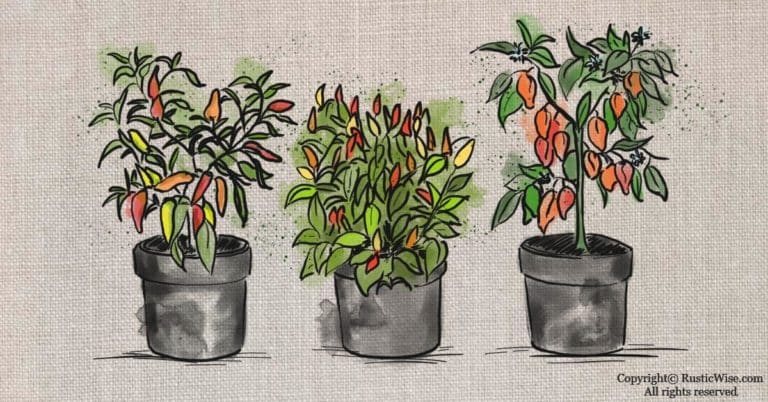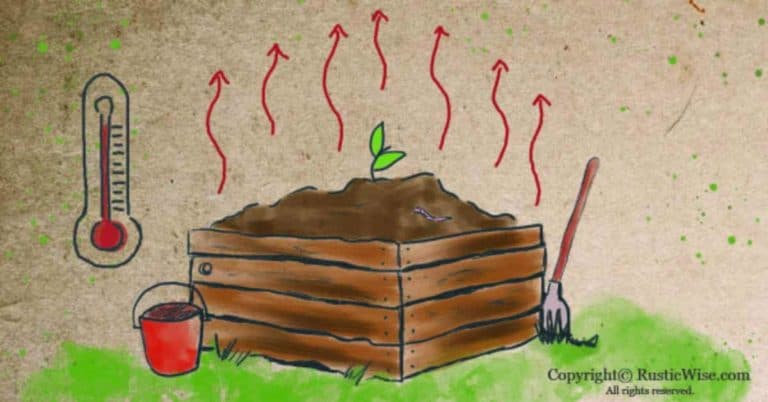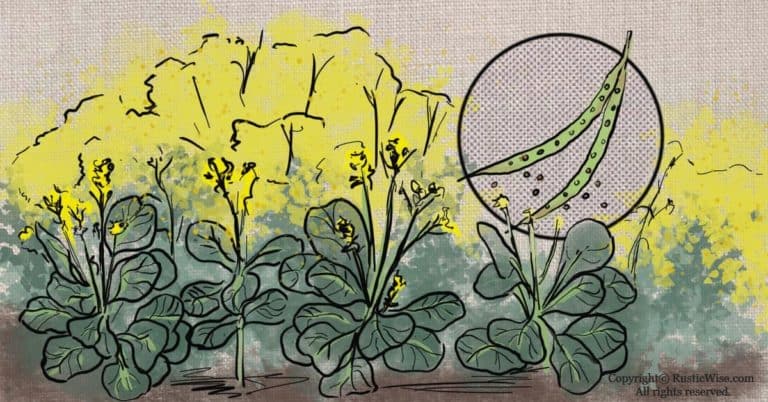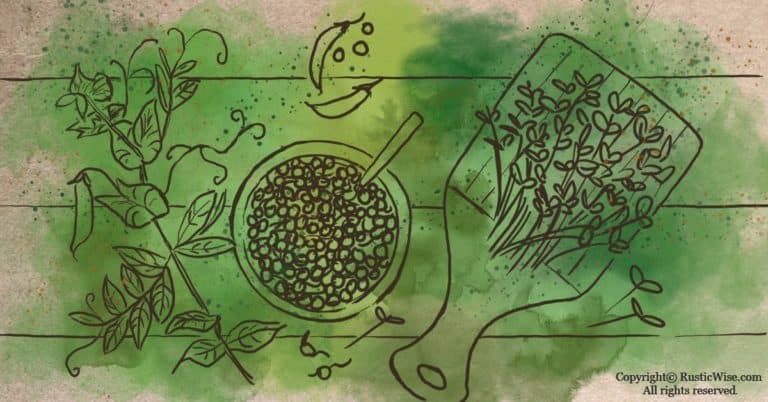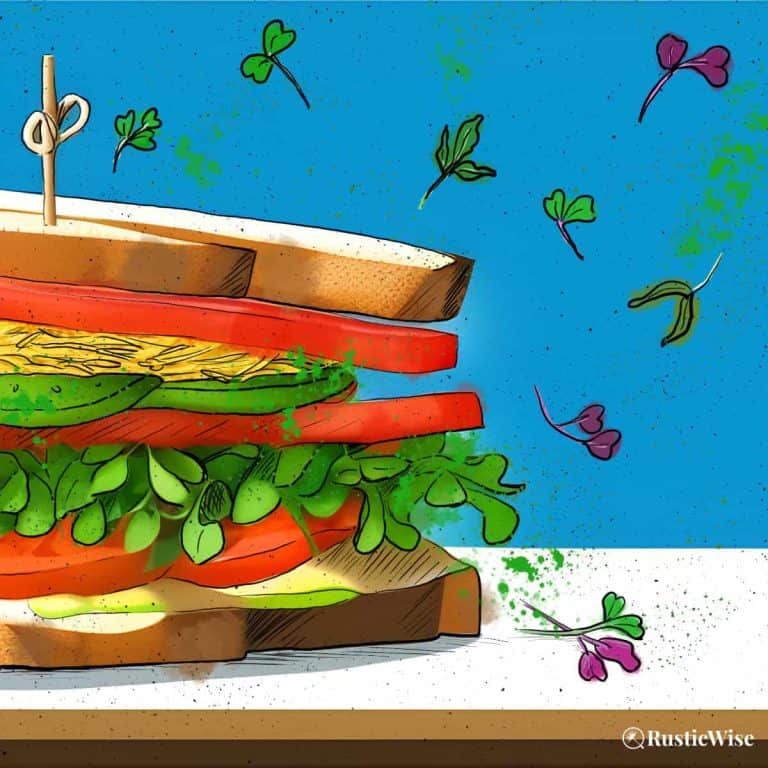Can You Compost Shrimp Shells? How Shrimp Shells Help Your Garden
If you just enjoyed a seafood feast, you may be wondering, can you compost shrimp shells? Yes, you can—with a bit of effort! Did you know that shrimp shells can be used in the garden to provide valuable nutrients? They are fantastic for enhancing soil’s nitrogen content, and also contain protein and calcium carbonate. However, there are some drawbacks to using them as well. We’ll discuss how you can use shrimp shells in your garden while avoiding their biggest problems: strong odors and attracting pests.
Shrimp shells are a source of rich nutrients for garden soil, but they also smell strongly when decomposing. We’ll show you a few ways you can use them in your garden while avoiding this problem!
What’s the deal with composting shrimp shells?
Most compost guidelines say that you should avoid adding anything animal-based to your compost. This includes animal fat, grease, meat and/or scraps, and fish bones. The U.S. Environmental Protection Agency (EPA) says that adding these types of ingredients may, “Create odor problems and attract pests such as rodents and flies.”
They are absolutely right about that. But, shrimp shells fall into a kind of gray area. Yes, shrimp shells can definitely create a huge stink, one that attracts all sorts of backyard critters including raccoons, seagulls, mice, and other unwelcome pests.
But (here’s another but), if done properly and in moderation, shrimp shells can be a valuable, nutrient-rich addition to your compost pile. So isn’t it worth exploring?
What’s in shrimp shells?
The exoskeleton of shrimp contains many nutrients and minerals including:
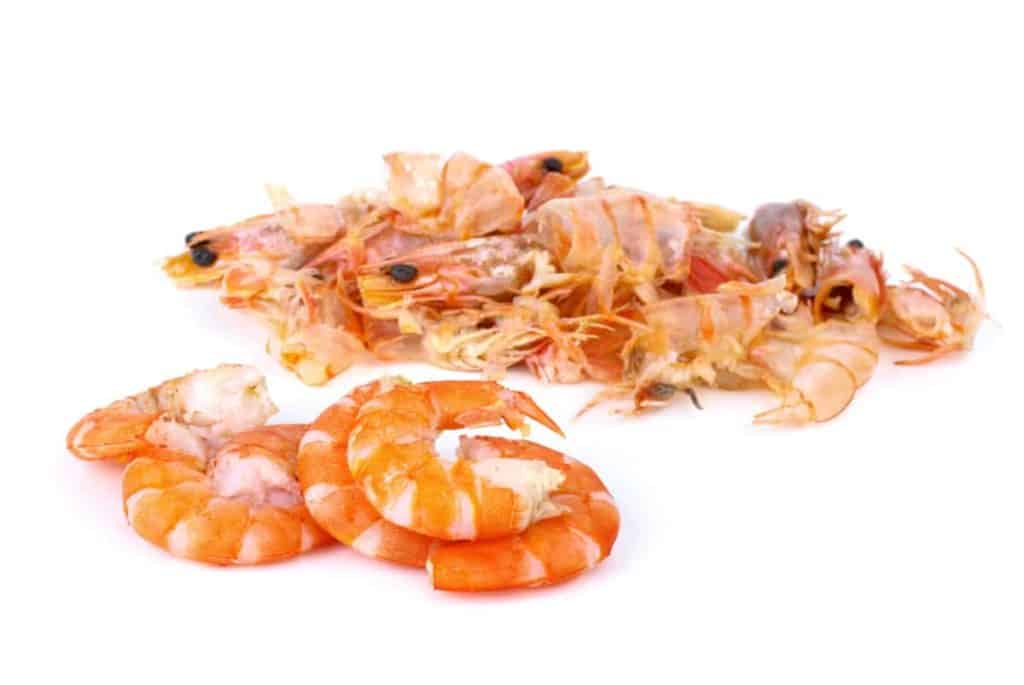
How do shrimp shells help your garden?
In the composting world, shrimp shells would fall under the “green” category, or nitrogen-rich components. Examples of green materials are kitchen scraps including coffee grounds, and fruit and vegetable peels. Green composting materials generally break down quickly.
To balance out the nitrogen in a compost, you’ll need carbon-based “brown” components for a healthy compost diet. Carbon provides a steady source of energy for microorganisms in a compost pile. Examples of brown compost ingredients includedried leaves, branches, and shredded cardboard.
Leftover shrimp shells also play a special role in the garden: fighting nematodes, according to ABC Science.
Nematodes are tiny worms that damage the roots of plants such as tomatoes, roses, and fruit trees. Over time, plants inflicted with nematodes die.
Chitin, the main component of shrimp shells, helps to ward off nematodes by providing food for the microorganisms that fight these garden pests. Fueled by chitin, these helpful microorganisms are eventually able to overcome nematodes.
So how do you use prawn shells to fight off nematodes?
- Rinse off any sauce, seasonings, and oil on shrimp shells.
- Grind up shrimp shells into small pieces.
- Incorporate them into a soil patch that’s at least one square meter. Work the shells into the top several inches of soil ensuring there’s not any exposed shells at the surface—this is sure to attract pests or birds looking for a tasty snack!
- Sprinkle with water.
- Sit back and let the chitin do their thing.
Can you add shrimp shells to a vermicompost?
The ecosystem of a worm bin is much more fragile than that of a backyard compost heap. As such, it’s best to tread gently when introducing a new type of food.
In general, it’s a good idea to stay clear of all animal products in a worm bin including meat, dairy products, and anything too greasy, spicy, or acidic.
However, an exception would be shrimp shells. You could feed your red wigglers a small amount of shrimp shells to see how they like it. It’s a good idea to break shells into smaller pieces to speed up the composting process. Just be aware that shrimp shells may cause quite a stink—best to add a little at a time to avoid attracting backyard pests if your worm bin is outdoors.
Perhaps better than shrimp shells, a good thing to feed to your worms regularly is dried, crushed eggshells—a source of high calcium.
How to add shrimp shells to a backyard compost
If you decide to add a few leftover shrimp shells to your backyard compost, and you don’t want it to create a huge stinky mess, there are three steps you can take to prep the shells before composting. Only add the shrimp shell, tail—avoid adding shrimp meat. Shrimp heads should be okay to throw in too.
- Boil: To clean, reduce odors, and remove any meat, boil shrimp shells for 20 minutes. If you don’t want to go through the bother of boiling the shells, at a minimum, you must rinse off all sauce, seasoning and oils to reduce any odors that may attract pests.
- Dry: Place shells on a baking sheet and bake in oven on low heat until dried. Shells will become brittle and easy to break down.
- Crush: Once cooled, you can easily break down the brittle, dry shells using a mortar and pestle, or even your hands.
Other composting tips:
- As shrimp shells are such a rich source of nitrogen, it’s a good idea to balance with a carbon-rich compost ingredient like dry leaves. This also helps mask any odors.
- Add in moderation. Avoid adding too much at one time to avoid attracting pests.
- It’s best to add shrimp shells if you have an enclosed compost bin with a lid or cover, and preferably one with a elevated stand to prevent small rodents from getting in.
- Dig a hole several inches deep in the center of your compost pile and place your shrimp shells in. This is the hottest spot in the compost, and where microorganisms are actively working to break down compost materials. Cover with other compost ingredients.
- Turn your compost regularly and keep it moist to speed up the composting process.
Local composting programs
If you don’t want to risk the chance of creating a smelly mess in your backyard, you could look into your local composting programs. Many curbside pickup programs accept shellfish and seafood shells from clams, crab, crayfish, lobsters, oysters, prawns, mussels, and shrimp.
Soil incorporation method
Some jurisdictions don’t allow for open backyard composting piles. Whether this applies to you, or whether you just don’t want to take the risk of attracting any backyard pests with shrimp shells, you could try the soil incorporation method.
Simply put, soil incorporation is a method of burying food scraps deep in the ground to compost without attracting pests.
- Collect and prepare food scraps: Gather together a variety of kitchen scraps including your shrimp shells. Cut food scraps into small pieces to speed up the decomposing process.
- Dig and mix: Dig a deep hole or trench between 12–15 inches (30–38 centimeters) deep. Take care not to disturb any roots of nearby trees or shrubs. Place the food scraps in the hole. You should have a layer around 3–4 inches thick (8–10 centimeters). Mix some soil into the kitchen scraps.
- Cover: Replace the soil so that you have at least 8 inches (20 centimeters) of soil covering the food. This barrier is important in keeping out any animals.
- Wait: Let nature do her work. Your kitchen scraps may break down in as little as one month up to a year, depending on your local climate and soil microorganisms.
Slowly over time, your soil reaps the benefits of added nutrients.
The final word: can you compost shrimp shells?
When it comes to composting shrimp, the process is a little more complicated than just tossing them in. It’s important to first clean and grind up the shells into small bits before adding them to your pile of carbon-rich material like dry leaves or straw. The final step is making sure you have a cover on top so that pests don’t get inside your bin.
You can also incorporate shrimp shells into garden soil. Shrimp are a rich source of chitin, which helps to ward off nematodes (worms) that attack plant roots.
Related questions
Can you compost whole shrimp?
I personally wouldn’t. Shrimp shells are one matter, but a whole shrimp, flesh and all, would be too tasty a treat for backyard critters to resist.
Is seaweed good for making compost?
Yes, seaweed is a good source of nutrients and a compost activator. It contains cytokinins, a type of nutrient that promotes healthy plant development and root growth. Many people use seaweed in the garden as a fertilizer or as part of a mulch. If you live by the coast, you might like to add seaweed to your compost. It’s considered a “green” compost ingredient which could be added to compost with kitchen scraps.

References
- United States Environmental Protection Agency (EPA), Composting At Home, https://www.epa.gov/recycle/composting-home. Accessed June 2021.
- Damrosch, Barbara (24 March 2016). “Why you should prepare a seafood dinner for your soil,” Washington Post. Accessed June 2021.
- Evangeli, Anna (15 January 2014), “Put another prawn on the garden,” ABC Science. Accessed June 2021.
- Grow It Organically, Setting Up a Worm Composting System, https://www.grow-it-organically.com/worm-composting-system.html. Accessed June 2021.
- Baltimore County Government, Soil Incorporation, https://www.baltimorecountymd.gov/departments/publicworks/recycling/composting/incorporation.html. Accessed June 2021.

Author: Theresa Tesolin
Theresa is co-founder of RusticWise. She helps people unleash their inner DIY spirit by encouraging them to get dirty and make or grow something from scratch.

